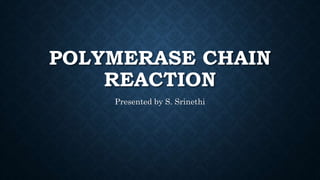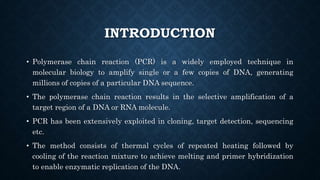Polymerase chain reaction (PCR) is a technique used to amplify a specific region of DNA through repeated cycles of heating and cooling. PCR uses DNA polymerase to replicate the target DNA region between primer sequences. The reaction involves initial denaturation of the DNA followed by repeated cycles of denaturation, annealing of primers, and extension of the DNA strand. This process exponentially amplifies the target DNA sequence, allowing millions of copies to be generated from a single DNA or RNA template.











































